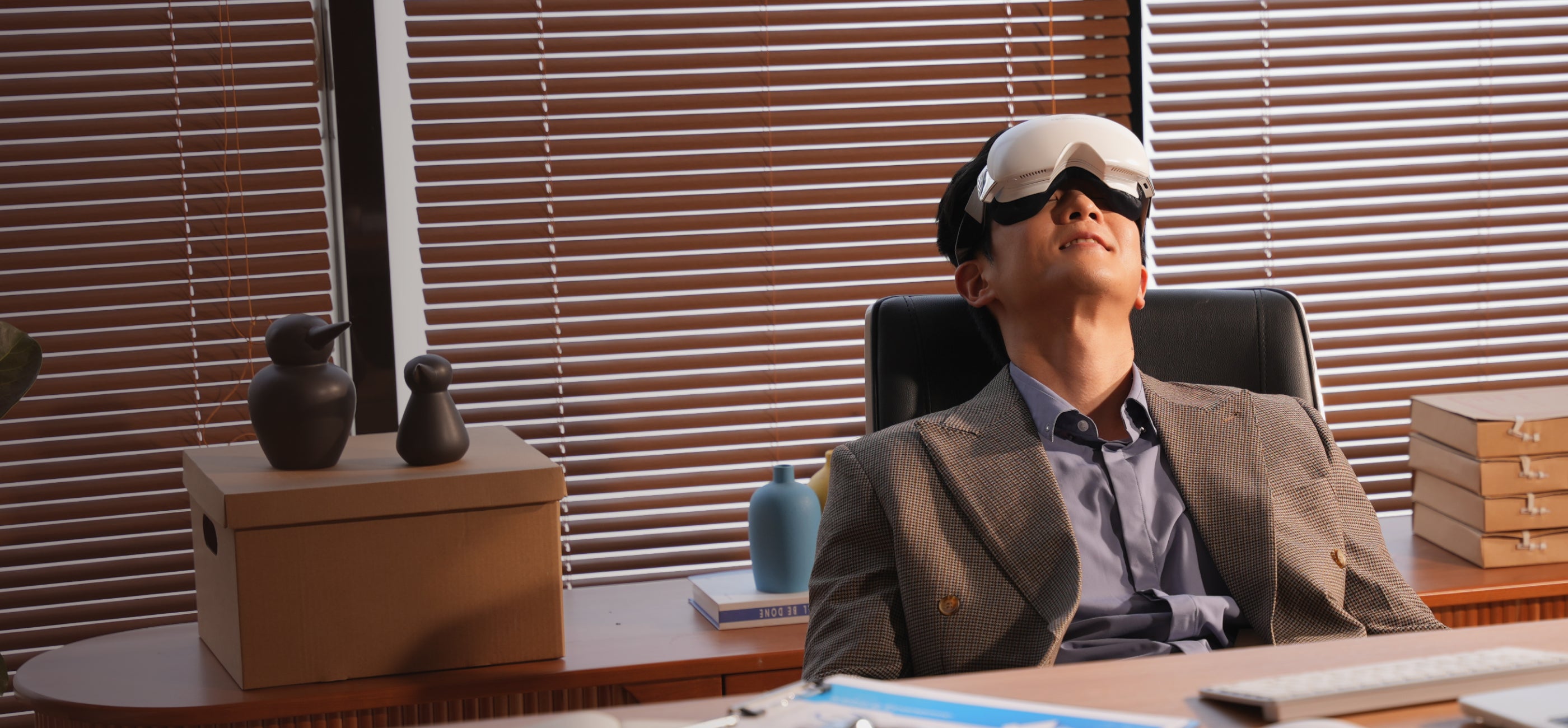Was passiert, wenn Sie Ihr Gehirn überlasten? Wissenschaft und Lösungen
Was passiert, wenn Sie Ihr Gehirn überlasten? Wissenschaft und Lösungen
Hatten Sie schon einmal das Gefühl, Ihr Gehirn bewege sich durch einen dichten Nebel? Aufgaben, die Ihnen einst leicht erschienen, wie das Finden der richtigen Worte in einer Teambesprechung, erscheinen Ihnen jetzt wie eine gewaltige Herausforderung und Sie haben Mühe, sich zu konzentrieren, sich Dinge zu merken oder sogar einfache Entscheidungen zu treffen. Wenn das der Fall ist, leiden Sie möglicherweise unter einer Gehirnüberlastung.
Unser Gehirn ist leistungsstark, aber wie jede Maschine kann es unter ständigem Druck überfordert werden. Bei uns im Alter zwischen 25 und 45, die oft anspruchsvolle Karriere, Privatleben und zahllose andere Verpflichtungen unter einen Hut bringen müssen, treten Gehirnnebel und geistige Erschöpfung immer häufiger auf. Aber was genau passiert, wenn Sie Ihr Gehirn überlasten, und noch wichtiger: Wie können Sie das Problem lösen? Lassen Sie uns die Wissenschaft hinter dem Gehirnstress und einige wirksame Methoden untersuchen, um Ihren Geist scharf und klar zu halten.
Die Wissenschaft der Gehirnüberlastung: Wie sich Stress auf Ihr Gehirn auswirkt
Ihr Gehirn ist ein komplexes Organ, das für die Steuerung von allem verantwortlich ist, von Ihren Gedanken und Emotionen bis hin zu Körperfunktionen wie Atmung und Herzschlag. Es ist jedoch auch anfällig für chronischen Stress und Überbeanspruchung. Wenn Sie ständig mit Informationen, Aufgaben und Verantwortungen bombardiert werden, hat Ihr Gehirn Mühe, alles effizient zu verarbeiten. Mit der Zeit führt dies zu „Brain Fog“ – einem Zustand geistiger Verwirrung oder Trägheit.
Einer der Hauptverursacher von Überlastung des Gehirns ist Cortisol, das Stresshormon. Während ein bestimmter Cortisolspiegel notwendig ist, um die täglichen Herausforderungen zu bewältigen, kann eine längere Belastung durch chronischen Stress schwerwiegende Folgen für Ihr Gehirn haben. Hohe Cortisolspiegel können:
• Ihr Gedächtnis beeinträchtigen
• Reduzieren Sie Ihre Konzentrationsfähigkeit
• Verlangsamen Sie kognitive Prozesse
• Führt zu Angstzuständen und Depressionen
Mit anderen Worten: Chronischer Stress erschwert das klare Denken, das Erinnern an Dinge und die Konzentration.
Symptome einer Gehirnüberlastung
Sie sind sich nicht sicher, ob Sie unter einer Gehirnüberlastung leiden? Hier sind einige häufige Symptome:
• Konzentrations- oder Fokussierungsschwierigkeiten
• Vergesslichkeit
• Sich geistig erschöpft fühlen, selbst nach minimaler geistiger Anstrengung
• Schwierigkeiten bei der Entscheidungsfindung
• Häufige Kopfschmerzen oder Migräne
• Sich unmotiviert oder gereizt fühlen
Wenn die meisten dieser Symptome auf Sie zutreffen, ist es vielleicht an der Zeit, einen Schritt zurückzutreten und zu überlegen, wie Sie Ihrem Gehirn die nötige Entlastung verschaffen können.
Lösungen: So bauen Sie Stress ab und beseitigen den Nebel im Kopf
Glücklicherweise ist eine Überlastung des Gehirns kein Dauerzustand. Mit ein paar Änderungen im Lebensstil können Sie Ihre geistige Klarheit zurückgewinnen und sich konzentrierter fühlen als je zuvor. Hier sind einige wissenschaftlich fundierte Strategien, um Stress abzubauen und die Leistung Ihres Gehirns auf Höchstleistung zu halten:
Üben Sie Achtsamkeit und Meditation
Meditation senkt nachweislich den Cortisolspiegel und hilft, den Nebel im Kopf zu beseitigen. Schon 10 Minuten am Tag können einen großen Unterschied machen. Achtsamkeit oder die Konzentration auf den gegenwärtigen Moment ohne Urteil hilft Ihrem Gehirn, langsamer zu arbeiten und Informationen effizienter zu verarbeiten.
Treiben Sie regelmäßig Sport
Sport erhöht die Durchblutung des Gehirns, was wiederum die Sauerstoff- und Nährstoffversorgung der Gehirnzellen fördert. Dies kann das Gedächtnis, die Konzentration und die allgemeine Gehirnfunktion verbessern. Ein flotter Spaziergang oder ein flottes Training setzt außerdem Endorphine frei, die helfen, Stress abzubauen.
Achten Sie auf eine gesunde Ernährung
Ihr Gehirn braucht den richtigen Treibstoff, um zu funktionieren. Nehmen Sie Lebensmittel zu sich, die reich an Omega-3-Fettsäuren, Antioxidantien und Vitaminen wie B12 und D sind, die die kognitive Gesundheit unterstützen. Vermeiden Sie verarbeitete Lebensmittel und übermäßigen Zucker, da diese zu Gehirnnebel beitragen können.
Schlaf priorisieren
Schlaf ist für die Gesundheit des Gehirns unerlässlich. Während des Schlafs verarbeitet Ihr Gehirn Erinnerungen, scheidet Giftstoffe aus und bereitet sich auf den nächsten Tag vor. Streben Sie jede Nacht 7 bis 9 Stunden guten Schlaf an, damit sich Ihr Gehirn vom täglichen Stress erholen kann.
Versuchen Sie die Gammalichttherapie
Lichttherapie ist eine nicht-invasive Technik, bei der Licht mit bestimmten Wellenlängen verwendet wird, um die Gehirnaktivität zu stimulieren und die geistige Klarheit zu verbessern. Neuere Studien haben gezeigt, dass Gammalichtwellen im Nahinfrarotbereich dabei helfen können , die mitochondriale Funktion in Gehirnzellen zu regulieren , ihre Effizienz zu steigern und Entzündungen zu reduzieren. Die Einbeziehung der Lichttherapie in Ihren Alltag könnte eine wirksame Methode sein, um Stress zu bewältigen und die optimale Funktion Ihres Gehirns aufrechtzuerhalten.
Ein innovativer Ansatz der Lichttherapie ist die Gammalichttherapie , die nachweislich die Konzentration, das Gedächtnis und die allgemeine Gehirngesundheit verbessert. Diese Technologie ist jetzt im Handel erhältlich und kann problemlos zu Hause durchgeführt werden. Sie bietet eine einfache und zugängliche Möglichkeit, Ihre kognitiven Funktionen zu unterstützen.
Weitere Informationen zur Gammalichttherapie und wie sie Ihre Gesundheit verbessern kann, finden Sie hier .
Von einem Koushicare Brainband-Benutzer: „Ich bin ein 45-jähriger Kundenbetreuer, der ständig unter einem Nebel im Kopf und geistiger Erschöpfung aufgrund langer Arbeitstage leidet. Als ich nach natürlichen Möglichkeiten suchte, meinen Kopf freizubekommen, stieß ich auf die Gammalichttherapie. Ich bestellte das Koushicare BrainBand und es kam innerhalb weniger Tage an. Nach der ersten Woche der Anwendung spürte ich einen deutlichen Unterschied; mein Geist fühlte sich geschärfter an und ich konnte mich mit viel mehr Klarheit auf meine Arbeit konzentrieren. Nach einer Woche war mein Stresslevel gesunken und meine Produktivität sprunghaft gestiegen. Das war für mich ein Wendepunkt!“
Fazit: Schritte zu einem klareren Geist
Durch die Umsetzung dieser Strategien können Sie die Überlastung Ihres Gehirns reduzieren und Ihre geistige Gesundheit verbessern. Ihr Gehirn ist eines Ihrer wichtigsten Werkzeuge, daher ist es wichtig, darauf zu achten. Ob durch Achtsamkeit, regelmäßige Bewegung, eine ausgewogene Ernährung oder Lichttherapie – es gibt viele Möglichkeiten, den Nebel im Gehirn zu beseitigen und Ihren Geist scharf zu halten.
Sind Sie bereit, den Nebel zu lichten und Ihrem Gehirn die Pflege zu geben, die es verdient? Entdecken Sie, wie die Gammalichttherapiegeräte von Koushicare Ihre Gehirngesundheit unterstützen und Ihnen helfen können, Ihre beste Leistung zu erbringen.
7. Sep 2024










































